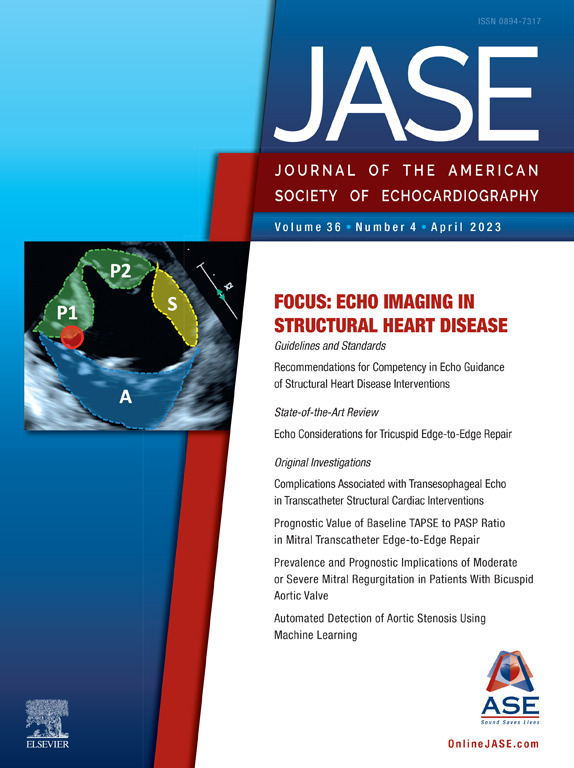The April JASE focuses on SHD interventions and includes “Recommendations for Special Competency in Echocardiographic Guidance of Structural Heart Disease Interventions: From the American Society of Echocardiography.” Lead authors Stephen H. Little, MD, FASE, and Vera H. Rigolin, MD, FASE, note that, “Transcatheter therapies have grown at a rapid pace in a very short period of time. This document outlines training standards for cardiology and anesthesiology fellows as well as those that have completed fellowship training and are learning interventional echocardiography via the experience pathway. The document outlines the requirements of the training institution, the duration of training, the core competencies of training, minimal procedural volume for competency in IE, and competencies for specific structural heart disease procedures.”
In her editorial, Patricia A. Pellikka, MD, FASE, JASE Editor-in-Chief, discusses the prevalent trend in medical publications of including more graphical content, stating, “Visual aids can assist with clarification of content, increase attention, save time, and enhance motivation for learning. JASE is interested in increasing pictorial and graphic content to make concepts easier to understand, increase engagement with our audience, and augment interest in the content.”
Additionally, the state-of-the-art review highlights echocardiographic considerations for tricuspid valve TEER. Other clinical investigations explore safety of TEE during structural cardiac interventions, the significance of RV-PA coupling in mitral valve TEER, the impact of MR in bicuspid aortic valve, machine learning detection of AS, and MAC in mitral valve SAM. The brief research communications describe rates of oropharyngeal and esophageal complications during structural heart disease procedures, patients with bicuspid aortic valve and large aortic annular diameter, and insights from a 15-year institutional experience of TEE for cardiac surgery patients with prior esophagectomies. Editorials further delve into MAC in SAM and harm prevention in structural cardiac interventions. The letters to the editor examine the diagnostic role of color-flow and continuous-wave Doppler echocardiography as well as transprosthetic cuff leakage of a novel aortic bioprosthesis.
The President’s Message, “Interventional Echocardiography: The Emergence of a New Imaging Specialty,” from Stephen H. Little, MD, FASE, reflects on aspects of this rapidly expanding subspecialty that has some catching up to do.
Publish date
April 6, 2023
Topic
- JASE
Related News


ASE News


